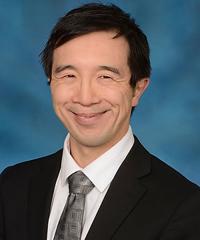For Bone Sarcomas, Early Recognition and Diagnosis Maximizes Chance for Cure

Vincent Ng, MD
Finding any form of cancer early can significantly improve survival rates, but it is especially important for patients with bone sarcomas, according to experts at the University of Maryland Cancer Network.
Bone sarcomas are rare and represent less than 1 percent of all adult cancers. Unlike other cancers such as breast or colorectal, there are no reliable screening tests for sarcoma. As a result, many bone sarcomas are not diagnosed until patients experience pain or a sizeable lump, says Vincent Ng, MD, assistant professor of orthopaedic oncology at the University of Maryland School of Medicine.
“Early diagnosis and proper treatment can make a considerable difference in survival,” he says. “We can cure about 50 to 70 percent of patients if they receive state-of-the art treatments in a timely fashion.”
Patients and their primary care physicians should watch for early signs of the disease including bone pain, unusual swelling in the same area as the pain, or a lump or mass. Unfortunately, the symptoms of osteosarcoma and Ewing sarcoma (the most common bone tumors found in children, teens and young adults) are often attributed to more common explanations such as “growing pains,” a bad bruise or a sports injury.
“If a kid has unexpected pain that does not go away or if they’re waking up in the middle of the night with pain in their extremities, that’s certainly a warning sign,” Dr. Ng says.
Dr. Ng encourages patients to share any signs of the disease with their doctors, especially if they have any new lumps or bumps. A plain X-ray or an MRI (magnetic resonance imaging) scan may be necessary to detect a sarcoma. Left untreated, sarcomas can grow or spread to other areas of the body, making treatment more complicated, he says.
Multi-disciplinary approach to bone sarcomas
UM Cancer Network specialists from the University of Maryland Greenebaum Comprehensive Cancer Center (UMGCCC), University of Maryland Baltimore Washington Medical Center, University of Maryland St. Joseph Medical Center, University of Maryland Eastern Shore Regional Health and University of Maryland Upper Chesapeake Medical Center embrace a multi-disciplinary approach for all bone sarcomas, collaborating on each phase of a patient’s care.
UMGCCC’s dedicated sarcoma team, The Bone Cancer and Soft Tissue Sarcoma Service organized by Dr. Ng, also evaluates the most challenging diagnoses.
“Our multi-disciplinary team involves surgical oncologists, orthopedic oncologists, pediatric oncologists, medical oncologists, radiation oncologists, plastic surgeons, microsurgeons, a dedicated sarcoma pathologist and musculoskeletal radiologists,” Dr. Ng says. “We review all the complex cancer cases weekly to make sure patients get optimal treatments.”
Those treatments include surgery, radiation, chemotherapy or a combination of these therapies. In many cases, UM Cancer Network patients can receive chemotherapy or radiation close to home.
About the UM Cancer Network
With the NCI-designated UM Marlene and Stewart Greenebaum Comprehensive Cancer Center as its hub, the UM Cancer Network offers patients access to nationally-renowned experts, cutting edge treatments and technologies, and the latest clinical trials. UMGCCC was ranked #16 in the nation for cancer care in the 2019-20 U.S. News and World Report's Best Hospital rankings. Learn more about UMGCCC and the UM Cancer Network.

